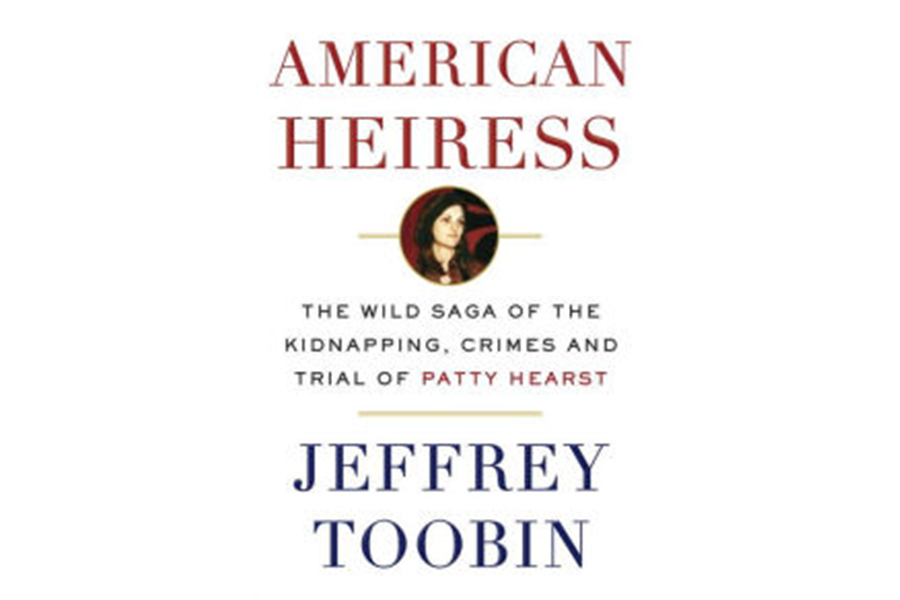5 surprising facts about the Patty Hearst kidnapping saga
Loading...
In a city full of cemeteries south of San Francisco, elaborate mausoleums proclaim the wealth and status of Northern California’s elite. One of the grandest, a granite reproduction of a Greek temple, stands regally on a hill. But it’s missing something: an identity.
There’s no family name on the outside. It was removed in the 1970s, reportedly because of fears that the mausoleum would be identified and damaged by vandals seeking to once again hurt the storied Hearst family. Terrorists had kidnapped Patricia Hearst, the young granddaughter of newspaper and political magnate William Randolph Hearst, and no one knew what chaos would come next. In his captivating new history, journalist and attorney Jeffrey Toobin expertly transports readers to this remarkably turbulent time in US history. As a nation watches, Hearst transforms from a cloistered and slightly rebellious college student into a radical bankrobbing fanatic bent on violent revolution.
Older readers and history buffs may think they know much of this story already. But Toobin’s American Heiress: The Wild Saga of the Kidnapping, Crimes and Trial of Patty Hearst provides new context and vividly brings to life the major players: the hostage, her frantic family, the kidnappers, the oftenoutmatched cops, and ordinary citizens pulled into the madness.
Here are five surprising facts from the pages of “American Heiress”:
1. Horrific violence wracked 1970s San Francisco
Bombings, spree murders, and the promised return of the Zodiac Killer: They all plagued the Bay Area in a matter of months in late 1973 and early 1974. As Toobin writes, no place better represented the “venom of the 1970s.” As the death toll from random killings grew, San Francisco itself neared a “collective nervous breakdown”; another author writes that “the city’s very identity began to dissolve.”
Amid all of this, the controversial African-American superintendent of Oakland schools was assassinated, the victim of an obscure radical group called the Symbionese Liberation Army, driven by an “anarchic intensity drawn from the chaos of the time and place.” The SLA’s next target: The daughter of a millionaire.
2. Kidnappers were conflicted and incoherent
The kidnappers were violent leftist radicals without a coherent philosophy. Their demands were outlandish, full of screeds about “the fascist insect,” and their incoherence spread to the treatment of their hostage, who encountered both kindness and brutality.
“She was threatened and reassured at the same time....” Toobin writes. “Literally and figuratively, the comrades didn’t know what they were doing.” But “this nonstrategy turned out to be a strategy itself,” one that may have devastated Hearst’s mind.
3. Future big names played roles in the Hearst story
To a remarkable extent, future household names appear in “American Heiress”:
• A law student named Lance Ito, the future judge, was startled at a shooting range by what sounded like an illegal fully automatic weapon, blasting three shots at a time. It was brandished by a comrade of the kidnappers.
• One of the kidnappers, a buoyant young actress, once helped a fellow student in Indiana named Jane Pauley, the future newswoman, escape from a date who seemed ready to attack her.
• An eccentric woman named Sara Jane Moore worked on a massive food drive demanded by the kidnappers. She’d later try to assassinate President Ford.
• A San Francisco reverend named Jim Jones tried to run the food effort but failed. He’d later head to Guyana, where the victims of his massive murdersuicide plot included Rep. Leo Ryan, one of Hearst’s most prominent advocates during her imprisonment.
Other celebrities appear in the book: basketball star Bill Walton (who played host to a couple who’d harbored Hearst), attorney F. Lee Bailey and a series of presidents who looked upon Hearst with sympathy.
4. Live coverage of standoff set standard
Members of the SLA would eventually face off with the police on live TV, an extraordinary moment in the history of television news thanks to the use of the new minicams. “To this point, networks had only broadcast live events where they could lay cable and plan in advance,” Toobin writes. Those days vanished in an instant.
5. Debate continues over Hearst’s role
Hearst didn’t talk to Toobin for his book. But he gives readers enough evidence to join a debate that’s raged well into the 21st century: How responsible is Hearst for her actions?
As he writes, Hearst appeared to be a “fanatic,” more “passionate and unhinged” than even some of her counterparts. She gave her occupation as “urban guerrilla” upon her arrest, and in a letter discovered by Toobin she soon afterward wrote: “I look forward to a lifetime of struggle.”
She got what she wanted, in a way. Hearst would go on to fight a long battle for mercy. She’d find it, a testament to persistence and the American embrace of second chances.
Randy Dotinga, a Monitor contributor, is a board member and immediate past president of the American Society of Journalists and Authors.







